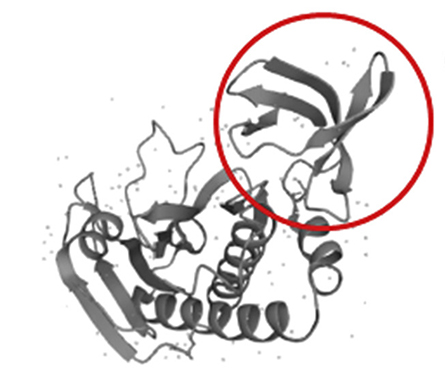MicroID2: Streamlined for better biotinylation
The study of protein interactions is a big field in molecular biology. Proteins network with one another for both intercellular and extracellular signaling pathways, many of which require the relevant proteins to be close together.
Researchers often use proximity-dependent biotinylation to characterize these interactions. In this process, an enzyme that labels proteins with biotin is attached to a protein of interest using CRISPR-based or plasmid-based expression strategies. When biotin is added to the experimental system, any protein in close proximity to the protein of interest is tagged and researchers then can purify and identify it.

Proximity-dependent biotinylation recently was used to discover sites where mitochondria contact the endoplasmic reticulum. The outer mitochondrial membrane is difficult to map by purification; the process quickly destroys the membrane, and membrane enrichment techniques are not perfect. By using biotinylation, researchers in the Ting lab at Stanford University accurately captured and identified proteins on the outer mitochondrial and endoplasmic reticulum membranes of living human cells.
James Londino’s lab at the Ohio State University Wexner Medical Center in Columbus, Ohio, has modified the structure of a state-of-the-art proximity-dependent biotinylation protein, BioID2,that is derived from Aquifex aeolicus bacteria. Benjamin Johnson, a graduate student and first author of a recent paper in the journal Molecular & Cellular Proteomics,explained that by removing the C-terminus of BioID2, the Londino lab created MicroID2, a smaller biotin ligase with fewer nonspecific labeling events than its predecessors.
“We asked, ‘Do we need this entire construct in order to facilitate labeling?’” Londino said.
The size of the ligase matters because larger constructs can cause mislocalization of the protein and disruption of endogenous signaling. This means the host cell will not perform its signaling pathways and other reactions as it would without the insertion of this new protein, skewing the validity of any results. A too-large construct may appear to associate with proteins in artificial ways.
The biotin ligase has a minimum size limit, however. Truncation of the BioID2 C-terminus beyond 63 amino acids completely inactivated the biotinylation activity. Deletion of 10 amino acids from the N-terminus also inactivated the enzyme.
The researchers performed other mutations to develop MicroID2, including substitutions at the active site, that increased the labeling efficiency. Additional mutations reduced nonspecific labeling, allowing more accurate analysis of protein–protein interactions.. Additional mutations reduced nonspecific labeling, allowing more accurate analysis of protein–protein interactions.
“When we’re overexpressing these constructs, they’re going to be continuously labeling,” Londino said. “Even when we completely deplete biotin from the media, there’s still going to be a certain amount of biotin labeling that occurs. By reducing the ability of these constructs to scavenge biotin … we were able to reduce the overall amount of background labeling.”
Johnson described MicroID2 as the smallest biotin ligase yet developed that maintains a high level of activity, but the lab is not done optimizing the construct. Next steps include further exploration of stable integration of the ligase and optimization of its stability.
The Londino lab plans to use these constructs to examine how ubiquitin ligases target specific proteins for degradation. As a lab studying ubiquitin biology, “we are pretty well positioned” to use this tool to examine protein stability, Johnson said.
Enjoy reading ASBMB Today?
Become a member to receive the print edition four times a year and the digital edition monthly.
Learn moreGet the latest from ASBMB Today
Enter your email address, and we’ll send you a weekly email with recent articles, interviews and more.
Latest in Science
Science highlights or most popular articles

Bacteriophage protein could make queso fresco safer
Researchers characterized the structure and function of PlyP100, a bacteriophage protein that shows promise as a food-safe antimicrobial for preventing Listeria monocytogenes growth in fresh cheeses.

Building the blueprint to block HIV
Wesley Sundquist will present his work on the HIV capsid and revolutionary drug, Lenacapavir, at the ASBMB Annual Meeting, March 7–10, in Maryland.

Gut microbes hijack cancer pathway in high-fat diets
Researchers at the Feinstein Institutes for Medical Research found that a high-fat diet increases ammonia-producing bacteria in the gut microbiome of mice, which in turn disrupts TGF-β signaling and promotes colorectal cancer.

Mapping fentanyl’s cellular footprint
Using a new imaging method, researchers at State University of New York at Buffalo traced fentanyl’s effects inside brain immune cells, revealing how the drug alters lipid droplets, pointing to new paths for addiction diagnostics.

Designing life’s building blocks with AI
Tanja Kortemme, a professor at the University of California, San Francisco, will discuss her research using computational biology to engineer proteins at the 2026 ASBMB Annual Meeting.

Cholesterol as a novel biomarker for Fragile X syndrome
Researchers in Quebec identified lower levels of a brain cholesterol metabolite, 24-hydroxycholesterol, in patients with fragile X syndrome, a finding that could provide a simple blood-based biomarker for understanding and managing the condition.

